This Religion Called Christianity 9
Mike Ervin
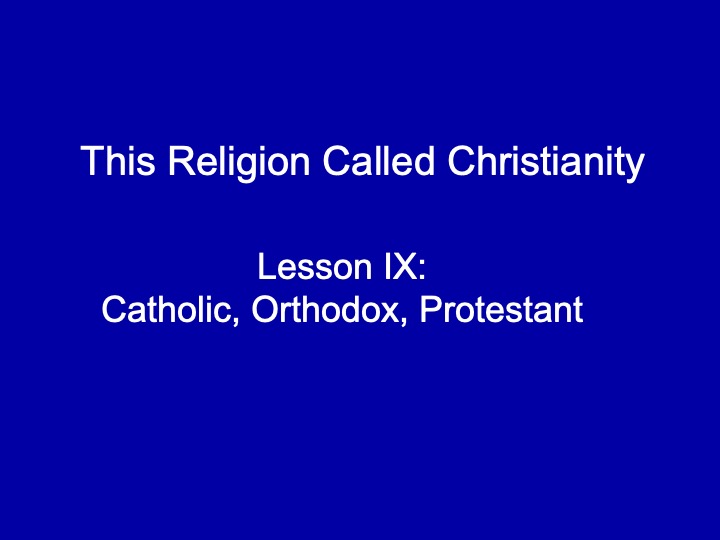
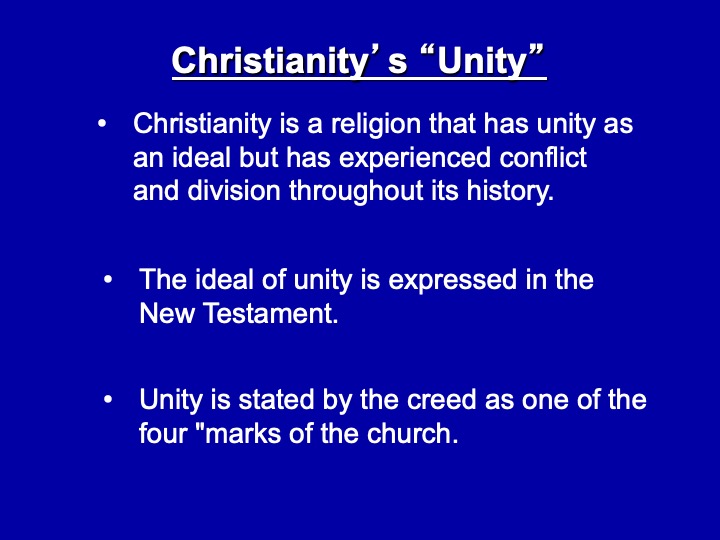
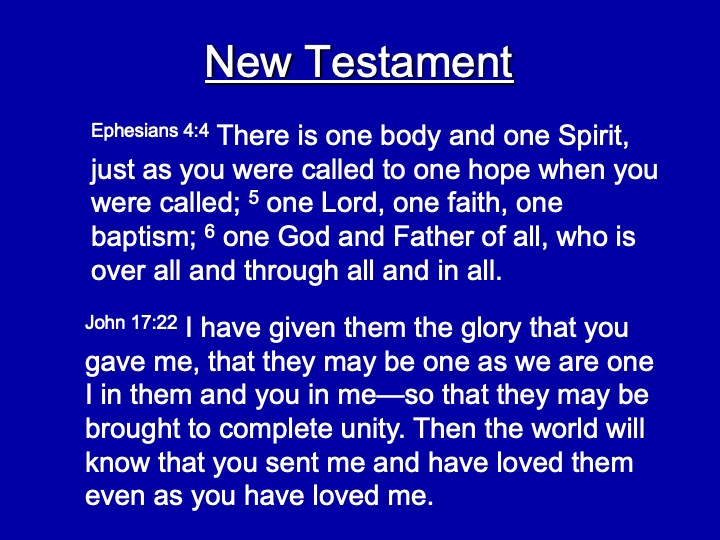
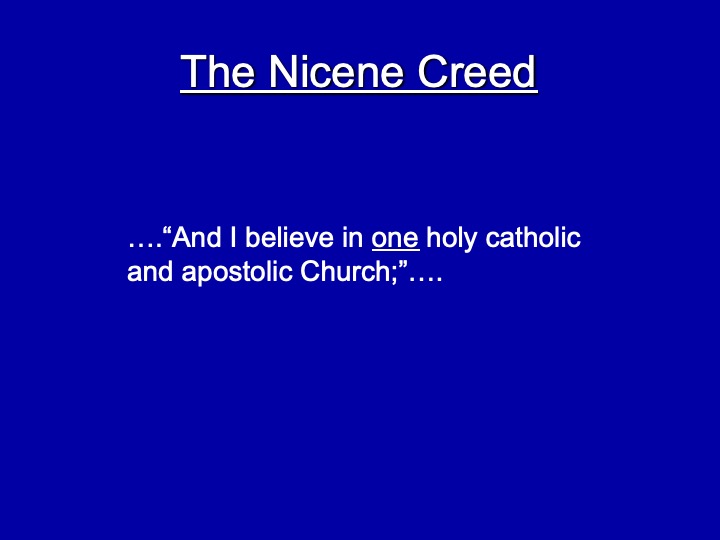
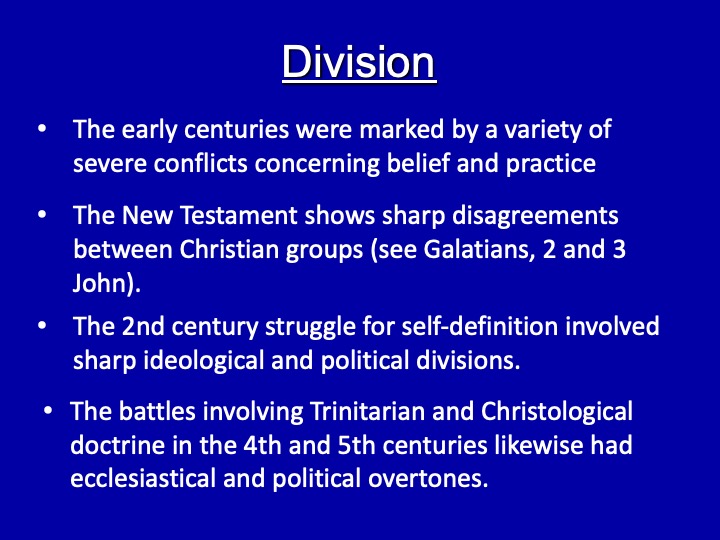
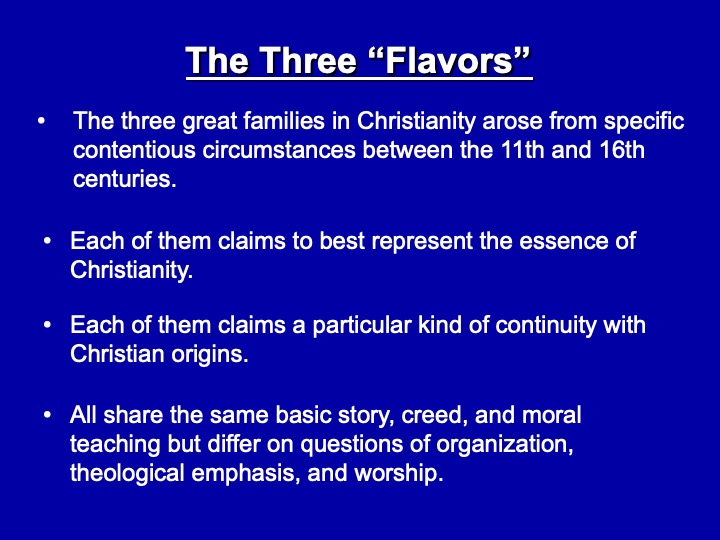

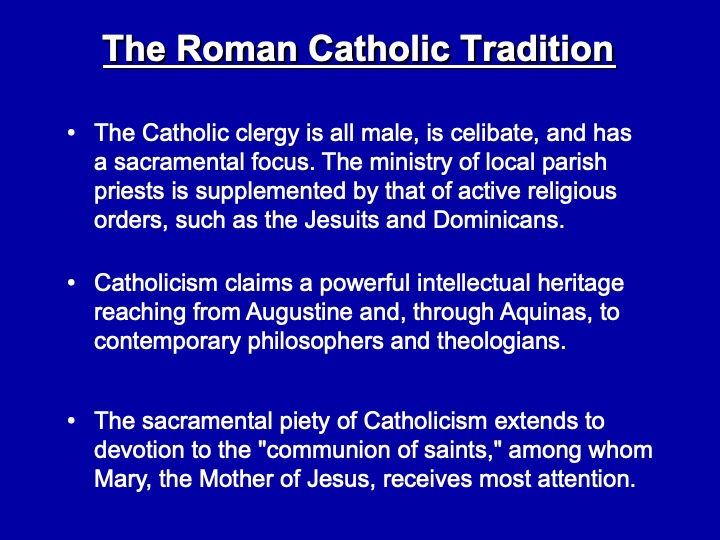
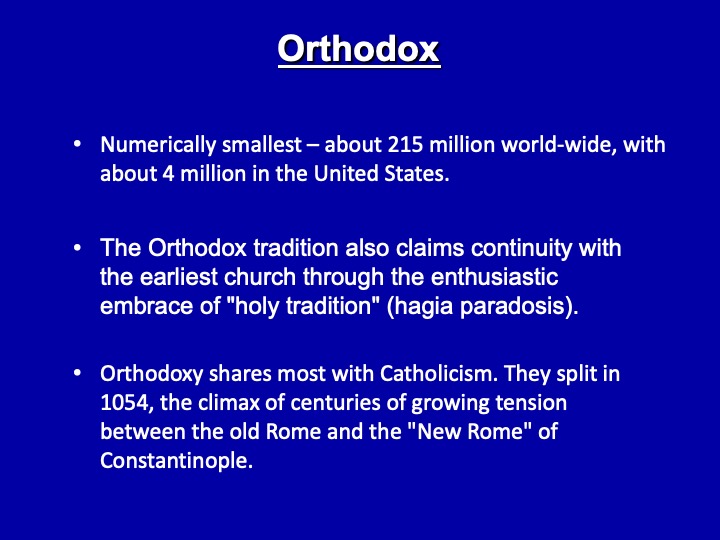
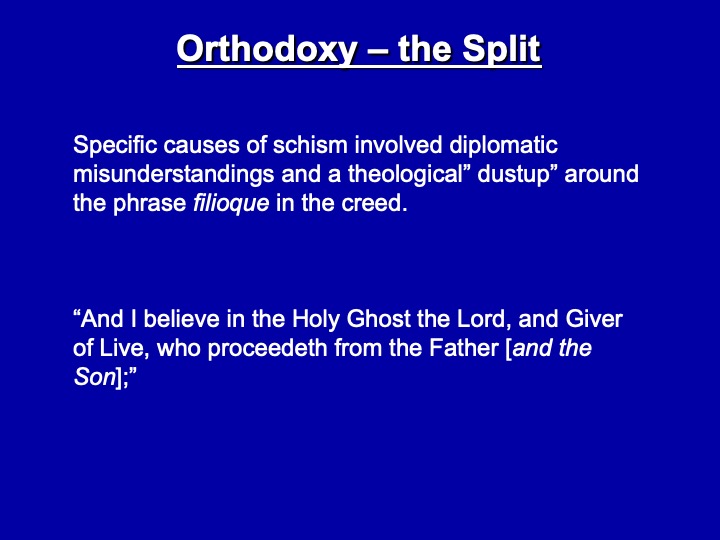

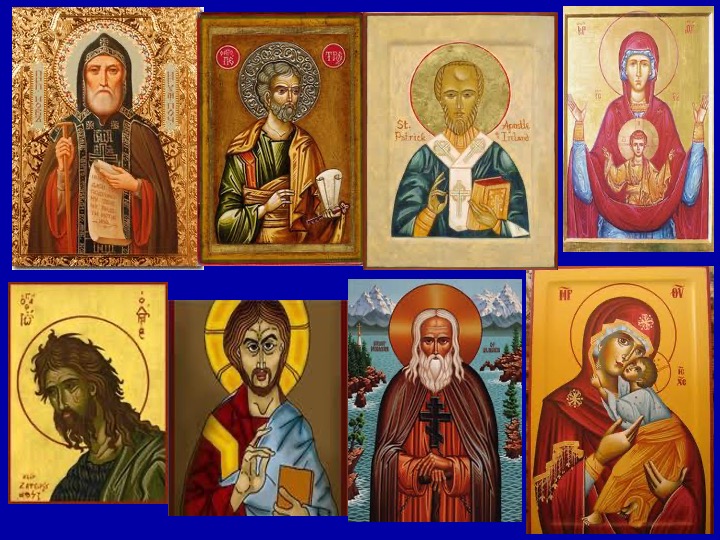
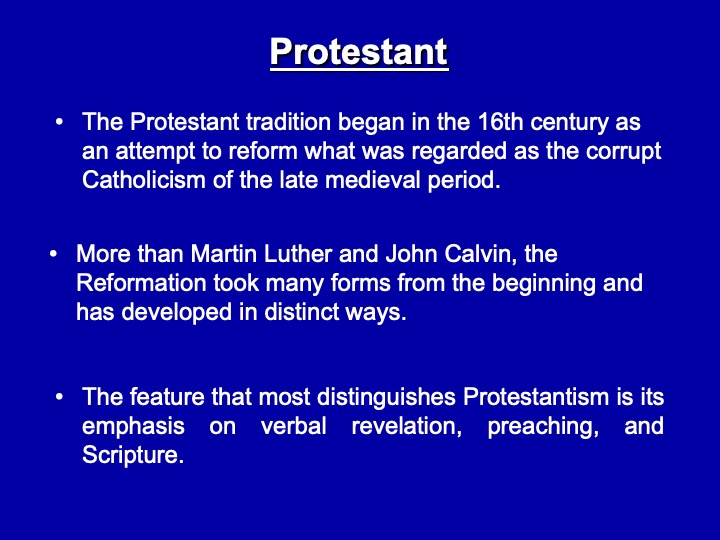
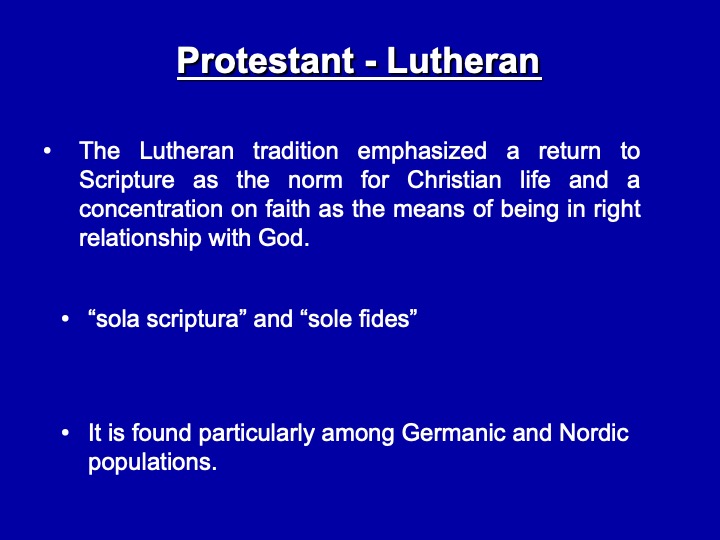
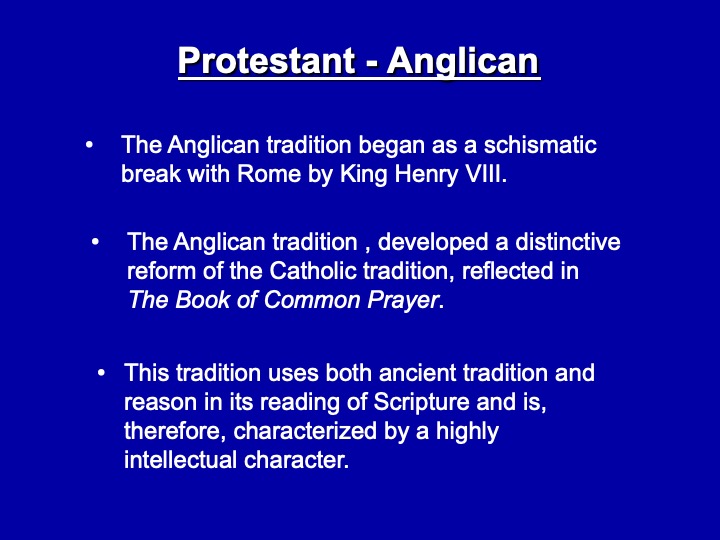
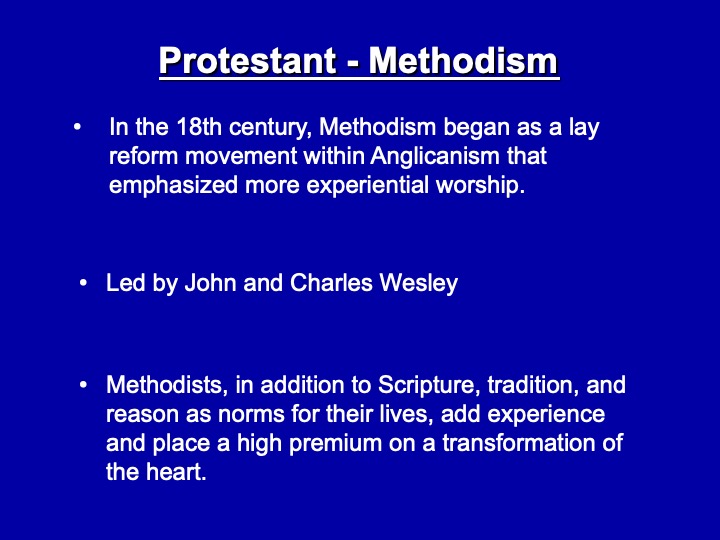
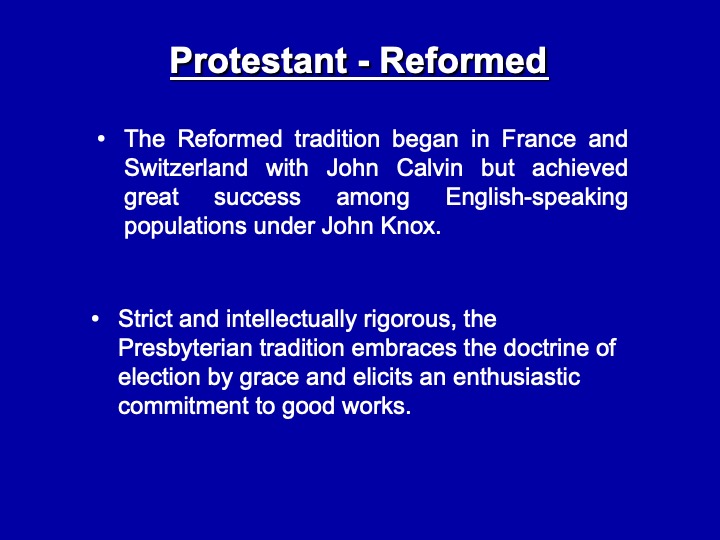

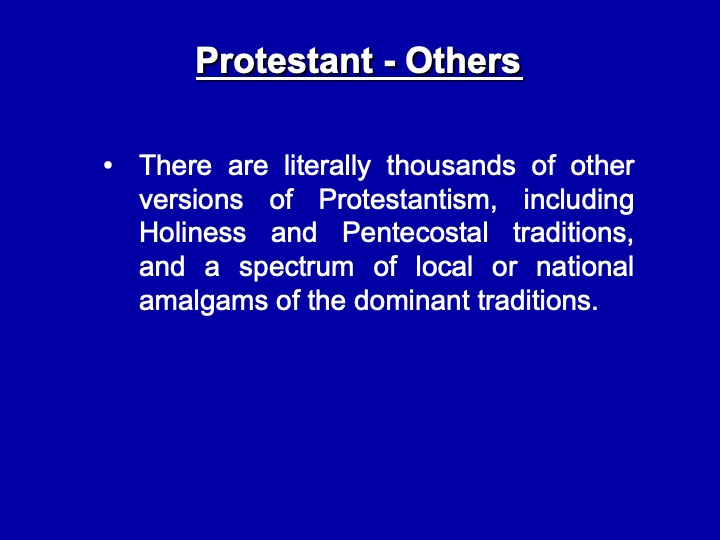
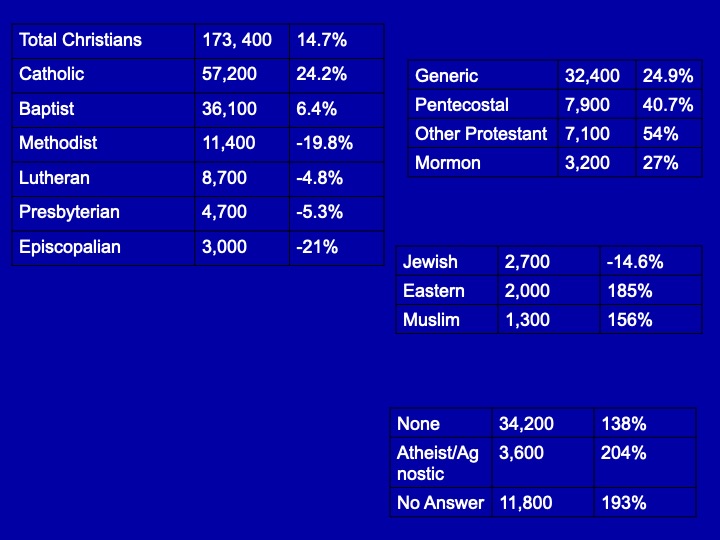


This Religion Called Christianity 9
Links
< Home Page > < This Religion - Christianity Menu > < Top of Page >
Class Nine Catholic, Orthodox, Protestant
Scope: Despite its ideal of unity, Christianity has always experienced divisions from within, some of which persist to this day. This presentation identifies the historical circumstances of the two greatest moments of division: the schism between Orthodox and Catholic in the 11th century and the Protestant Reformation of the 16th century. The salient features of the Orthodox, Roman Catholic, and Protestant traditions are then enumerated, including a survey of the many versions of the Protestant family. Because the three families share the same Scripture, story, creed, and morality, their differences tend to be found in points of theological emphasis, worship, and forms of organization.
Outline - This Religion Called Christianity
I. Christianity is a religion that has unity as an ideal but has experienced conflict and division throughout its history.
A. The ideal of unity is expressed in the New Testament and is stated by the creed as one of the four "marks of the church."
B. The early centuries were marked by a variety of severe conflicts concerning belief and practice:
1. The New Testament shows sharp disagreements between Christian groups (see Galatians, 2 and 3 John).
2. The 2nd century struggle for self-definition involved sharp ideological and political divisions.
3. The battles involving Trinitarian and Christological doctrine in the 4th and sth centuries likewise had ecclesiastical and political overtones.
C. The three great families in Christianity arose from specific contentious circumstances between the 11 th and 16th centuries and led to three distinct and usually competing versions of the religion.
1. Each of them claims to best represent the essence of Christianity.
2. Each of them claims a particular kind of continuity with Christian origins.
3. All of them share the same basic story, creed, and moral teaching but differ most on questions of organization, theological emphasis, and worship.
This Religion Called Christianity
II. The Roman Catholic tradition claims simply to be "catholic" but the designation Roman signifies what distinguishes it from Orthodoxy and Protestantism.
A. Catholics share the basic elements sketched in earlier lectures and regard them as essential to its claim of a continuous tradition reaching back to the Apostle Peter.
B. The organization of the church is universal and hierarchical, with authority coming from the Bishop of Rome (the pope), through archbishops and bishops, to the local clergy and laity of dioceses throughout the world.
C. The Catholic clergy is all male, is celibate, and has a sacramental focus. The ministry of local parish priests is supplemented by that of active religious orders, such as the Jesuits and Dominicans.
D. Catholicism claims and cultivates a powerful intellectual tradition reaching from Augustine and other patristic authors, through Aquinas and other Scholastic masters, to contemporary philosophers and theologians.
E. The sacramental piety of Catholicism extends to devotion to the "communion of saints," among whom Mary, the Mother of Jesus, receives most attention.
This Religion Called Christianity
III. The Orthodox tradition also claims continuity with the earliest church. Indeed, the embrace of "holy tradition" (hagia paradosis) is emphatic in a version of Christianity that eschews change.
A. Orthodoxy shares most with Catholicism. The two camps split as a result of schism in 1054, the climax of centuries of growing tension between the old Rome and the "New Rome" of Constantinople.
1. Political rivalry between capitals was expressed by religious rivalry between patriarchates, and the Latin-speaking West (facing the rapid changes subsequent on barbarian invasions) grew culturally apart from the more stable Greek-speaking East.
2. Specific causes of schism involved diplomatic misunderstandings and the theological dustup around the phrase "and the Son" (ji/ioque) in the creed.
B. The Orthodox tradition is dominant in Greece, Russia, the Slavic nations, Turkey, Cyprus, and the Middle East. Organization is patriarchal, with special honor given to the Patriarch of Constantinople. Local clergy are married, but the long-standing monastic tradition is celibate, and bishops are drawn from among monks.
C. Orthodox spirituality is rich and complex, with particular emphasis on an apophatic mysticism. The veneration of the saints is reflected in the use of icons in liturgy and in contemplative prayer. The resistance to the iconoclastic movement within Orthodoxy (influenced by Islam) was a defining moment in shaping this tradition's character.
D. Orthodoxy is centered in worship. The liturgy is regarded as a participation in the heavenly worship and is a powerfully moving and transforn1ing experience.
This Religion Called Christianity
IV. The Protestant tradition began in the 16th century as an attempt to reform what was regarded as the COITupt Catholicism of the late medieval period. Although symbolically connected to the figure of Martin Luther and John Calvin, the Reformation took many fOl111S from the beginning and has developed in distinct ways. The overall feahlre that most distinguishes Protestantism from Catholicism and Orthodoxy is its emphasis on verbal revelation, preaching, and Scriphlre.
A. The Lutheran tradition emphasized a return to Scripture as the norm for Christian life and a concentration on faith as the means of being in right relationship with God. It is found especially among Germanic and Nordic populations.
B. The Anglican tradition began as a schismatic break with Rome by King Hemy VIII but, under Thomas Cranmer, developed a distinctive reform of the Catholic tradition, reflected above all, in the forms of piety found in the Book a/Common Prayer.
Anglicans (or Anglo-Catholics, or Episcopalians) are primarily English speaking. This tradition uses both ancient tradition and reason in its reading of Scripture and is, therefore, characterized by a highly intellectual character.
C. In the 18th century, Methodism began as a lay reform movement within Anglicanism that emphasized fervent piety in imitation of the ancient monks. Methodists, in addition to Scripture, tradition, and reason as norms for their lives, add, revealingly, experience. The Methodist (or Wesleyan) tradition places a high premium on experience and the transformation of the heart.
D. The Reformed tradition began in France and Switzerland with John Calvin but achieved great success among English-speaking populations under John Knox. Strict and intellectually rigorous, the Presbyterian tradition embraces the doctrine of predestination and elicits an enthusiastic commitment to good works.
E. The Anabaptist (meaning, "to be baptized again") movement in 16th -century Germany emphasized free and intentional commitment reflected in the practice of adult baptism. It broke away from the centralized, hierarchical tradition of other sects and is centered in the local congregation, each local congregation being freestanding. The Baptists represent the largest (and most "evangelical") form of Protestantism worldwide; most Baptists reject any form of creed or hierarchy and put tremendous emphasis on liberty.
F. There are literally thousands of other versions of Protestantism, including Holiness and Pentecostal traditions, and a spectrum of local or national amalgamations of the dominant traditions.
This Religion Called Christianity
V. The biggest scandal to non-Christians in this constant proliferation of Christian denominations is the intense rivalry and hostility that has so often existed among them, deriving from each one's claim to be the exclusive representative of authentic Christianity (see final lecture ).